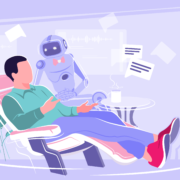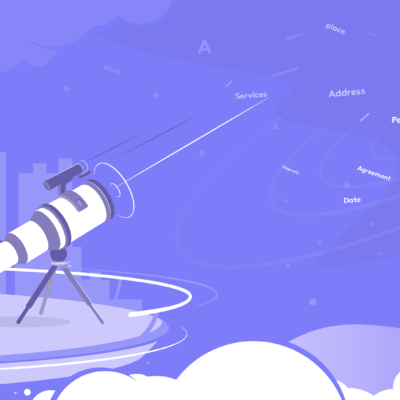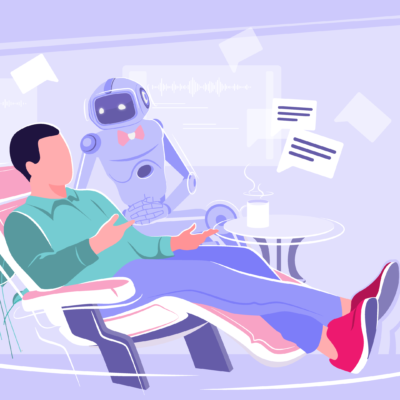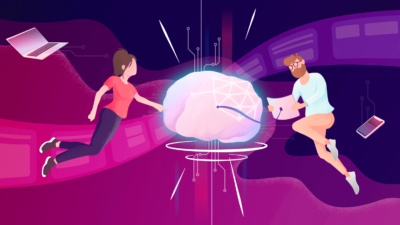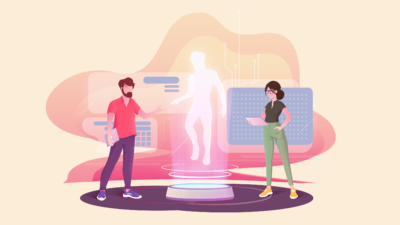It’s hard to believe that technologies for developing and testing artificial intelligence have been around since the 1950s. The AI discovery started with a simple question of whether machines can think as humans do. Today we may have the answer and even can categorize artificial intelligence technologies into different types.
What is Artificial Intelligence
Machines can ‘learn.’ Artificial intelligence software employs different methods of search and pattern matching; this could be an algorithmic process, knowledge base modification, or adaptation of its structure. Pattern matching aims to search the knowledge base for particular conditions that match the criteria of the query that needs to be solved. Artificial Intelligence is a mixture of computer science, sociology, and mathematics.
One of the founders of AI, Marvin Lee Minsky, defined the technology of the future as
“The science of making machines do things that would require intelligence if done by men. It requires high-level mental processes such as perceptual learning, memory, and critical thinking.”
Artificial intelligence is used in various areas, such as education, healthcare, problem-solving in math, robotics, and natural language processing. The potential of some programs to resolve issues based on specific facts over predetermined steps of the algorithm is what mirrors the human way of ‘thinking.’
Determining AI types
The main area of AI research implies that the software must resemble human-like roles. So, the machine’s ability to replicate one’s actions and way of thinking marks one method of AI categorization. Current technologies of artificial intelligence can be generally classified as:
- Systems that think like humans
- Systems that act like humans
- Systems that think rationally
- Systems that act rationally
The Narrow, General and Super Intelligence
One of the significant AI technology responsibilities is to perform a particular reasoning or problem-solving task. Such is known as ‘weak’ or Artificial Narrow Intelligence (ANI) — delivering a single job by analyzing data from a specific data-set, either real-time or past. It functions within a predetermined and strictly defined scope, even if it seems more complicated.
On the contrary, General or ‘strong’ Artificial Intelligence (AGI) is what the data scientists from all over the world aim for. It is still hard to imagine it outside a movie scene that and autonomous AGI is fitted to perform intelligent action and real cognitive functions. Like humans, AGI is being designed to judge actions and words on moral grounds, make sophisticated decisions, and have solid associative memory. Who knows, maybe in the next couple of years you will be making friends with an AGI machine that looks like your favorite blogger, that would give you relationship advice, share experiences and create new concepts.
Further, human minds form superintelligence, so people’s collective brains are greater than those of the brightest person on Earth. Yet, this is not the high end of the intelligence continuum — advanced technologies of yet to be invented Artificial Superintelligence (ASI) may fit the gap. ASI will not only duplicate the complexity of human intelligence, feelings, and emotion but will also be much more advanced at all activities (brain and physical). It is hard to imagine the world filled with ASI robots or humanoids, as it only seems like a utopia for now.
Point of information
The world’s most powerful AI is being developed this very moment! The Frontier, a supercomputer sponsored by the US Department of Energy, is set to enter the scene in 2021. It will be a special moment because the developers claim the computer will deliver a processing output of 1.5 exaflops. Just imagine, this is 50 times more than any of the existing supercomputers. Such power will be used to advance the studies of physics, sub-atomic structures, weather, genomics, chemistry, and medicine.
The Frontier user will be able to download 100,000 HD resolution movies in one second, discover disease genetics, integrate AI with modeling and simulation, and so on.
From reactive machines to self-aware ones
Let’s move on. It is possible to examine how an AI machine compares to a person in terms of versatility and administration. This means that there are limited-function types of AI as well as more evolved ones. Based on these criteria, the four types of AI-based systems emerged.
|
|
|
|
The above is the basic and the clearest categorization of AI types. Such a system is not too broad or too specific; it covers all artificial intelligence software that already exists and is yet to be created in the nearest future.
Four AI types explained
I. Reactive machines
Let’s go back in time: IT scientists presented the Deep Blue, IBM’s chess-playing supercomputer in 1997. Deep Blue is a reactive machine powered by artificial intelligence with a minimal number of functions. It beat Garry Kasparov in a chess tournament as it could identify the items on a chessboard, the rules of moving them, and possible predictions of the opponent’s next move. Such machines do not have store memories (data) or learn from previous experiences. They can only function as an automatic response to a set combination of input information.
II. Limited memory machines
Almost all apps that you use on your phone or laptop are developed under this category of artificial intelligence. Limited memory machines are not just reactive software but also store a set of historical or pattern data that can be used in decision-making. These make extensive use of deep learning, large data-sets as well as build experiential knowledge.
Elon Musk’s Tesla car is a great example of this category’s use of artificial intelligence. The driverless cars that use autopilot combine what is observed via cameras and pre-programmed knowledge to make decisions while on the road. It is exciting to see how self-driving vehicles scan the environment, the obstacles, and other cars in order to adjust to the emerging patterns. The technology makes thorough observations, including satellite information about traffic, lane markings, traffic lights, and turns.
III. Theory of mind
Society is essential for human relations and daily interaction. People live in a community to experience and share thoughts, feelings, and emotions. Today, this category’s AI systems can easily blend in: they can have a proper conversation with a person, notice and remember emotional reactions, and respond to one’s behavior depending on a situation.
Theory of mind AI targets to achieve full decision-making ability for the machines that would be just like that of a human. The software, wrapped in a nice human appearance, can imitate a thought process and experience emotions.
The greatest achievement of the theory of mind is a humanoid bot named Sophia, created in 2016. It became the first machine that looked exactly like a human, mimicked the facial expressions, could ‘see’ thanks to the feature of image recognition and respond to interaction. It is the most advanced form of AI in human history. Sophia was even declared a full-right citizen by Saudi Arabia in 2017.
IV. Self-aware AI
Self-aware AI marks the most futuristic stage of AI classification and progress. Creating human consciousness outside the human body is the ultimate goal of artificial intelligence study. Is it possible to teach the machine to feel the full spectrum of emotions, be empathetic, and have primary humane needs? In the meantime, there are no machine prototypes that present the autonomously developed self-awareness, consciousness, or thinking.
It may be decades before something like a self-aware robot-humanoid-human is created. It may never happen, even. Yet, it is possible in theory.
Let’s see where NLP fits
Natural Language Processing (NLP) fits into a Limited Memory category of artificial intelligence. NLP is applied to help the computers and machines understand and react to natural human language. The designed AI software has to ‘listen,’ ‘read,’ process, and analyze human speech and text to make sense and patterns of the natural language. NLP is important because it helps resolve ambiguity in language and adds useful numeric structure to the data for many downstream applications, such as speech recognition or text analytics.
Here at Phase One Karma, we believe that NLP is the most successful driving force to create innovation nowadays. The technology helps to uphold human relations, free people from performing manual tasks, and better understand human interaction needs. Our team examines the challenging interface of inter-human communication to find suitable NLP solutions that will make life and communication easier. Developing NLP solutions is crucial for us because they help avoid ambiguity and add numeric structure to the qualitative data.


